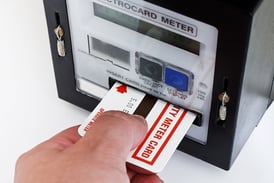Five questions to evolve your MVNO strategy from voice to data profitability
There was a time when mobile was so fresh and new that you could just sell voice minutes and gain market share. Indeed, the first MVNOs brought cool handsets and mobile coverage to completely new audiences.
But that’s all changed.Today’s customer has endless choice, so to stay competitive your MVNO should both meet customer needs and support your retail brand. Here are the questions you should ask to drive value from an MVNO in today’s world of highly configurable data services.
1. Is mobile just a product line, or part of your brand strategy?
Most retailers today treat their MVNO operation as a product line, no different from bread or fish fingers. And that’s no surprise: when handsets and minutes are bought wholesale through operators, mobile is a commodity like every other product on the shelves.
 But today, mobile can be elevated into a more strategic product: one which builds loyalty and brand engagement. With up to 40% of consumers tempted by low-price supermarkets, there’s never been a better time to push your brand into the home, on multiple devices[1]. As Erick O’Connor, Managing Partner of telecoms consultancy Piran Partners says, retailers “need to change their view of mobile as a product line to be sold in store and instead seek to use it to build challenger propositions that drive their whole business"[2].
But today, mobile can be elevated into a more strategic product: one which builds loyalty and brand engagement. With up to 40% of consumers tempted by low-price supermarkets, there’s never been a better time to push your brand into the home, on multiple devices[1]. As Erick O’Connor, Managing Partner of telecoms consultancy Piran Partners says, retailers “need to change their view of mobile as a product line to be sold in store and instead seek to use it to build challenger propositions that drive their whole business"[2].
2. Are you stuck in pre-pay?
Pre-pay is restrictive. Like paying for electricity on a key, it’s inflexible and painful, focuses on price, and is therefore used primarily by the value demographic. It’s not the brand that most retailers want to project - and it’s not what customers want, either: the pre-pay market has contracted by 6% per year (CAGR) over the last five years. That’s over 8 million consumers leaving prepay despite the overall mobile market continuing to grow[2].

The reason for pre-pay was that retailers had to piggyback on their operators’ delivery and billing infrastructure. That’s no longer necessary – or particularly profitable. Consumers today want smart digital services on smart phones, and that means moving to flexible post-pay relationships. This matches the post-austerity move of retailers away from price-matching and into differentiated services; as the Grocer reported: “Now that supermarkets are all offering various price match promises, they have levelled the playing field as far as price is concerned so they have to explore new ways of differentiating themselves to attract and retain shoppers.”[1]
3. It's your checkout. So what else are you selling?
Retail is about selling. And if your only mobile product is minutes, you’re missing out on both the upsell opportunity and the chance for high margins on digital products. The OTT (over-the-top / bolt-on) market has exploded, with music streaming, retail, movie and communications services all turning a profit. It’s your checkout, so if you’re not selling these products, you might as well have the tills switched off. Analyst PwC’s 2015 advice to operators is just as valid for retailers: “Success will depend upon gaining a deeper understanding of coherent digital ecosystems.”[3]
4. Is mobile destroying your brand instead of helping it?

We've seen that pre-pay caters to a very specific and restrictive demographic. And we’ve seen that pre-pay is inflexible and undifferentiated. That’s a big problem: not only is it then impossible to compete in the mobile market on anything but price (a race to the bottom), but your mobile product is likely to be pointing at the wrong market segment – it could actually be harming your brand. After all, supermarkets don’t have just one type of customer.
5. Does your partner care about you?
Consumer demand for data services requires a new relationship between brands and their operator partners. Instead of commoditised minutes, MVNOs must differentiate through bundles and offers. As Analysys Mason put it: “Unit-based approaches to pricing are losing relevance in a data-driven environment”[4].
In the wholesale paradigm, retailers were often at the back of an operator’s product management queue. Instead, today’s retail MVNO wants to customise and differentiate services as close to real-time as possible – rather than the matter of months which has sometimes been the case in the past. They want to build bespoke consumer-facing services, and that flexibility is just as important as any negotiation about the price of minutes at scale.
It’s time to build a mobile offer around your customers

Customers have more choice, and to remain profitable, your MVNO offer must reflect this. You put plenty of effort into customising your stores to attract specific customer demographics; and the same is now mandatory for mobile services. Luckily, all of this is now possible: by moving to post-pay accounts, you can design services which meet the needs of both your brand and your customers. Plus, you’ll be able to redesign those services as demand changes – staying relevant and brand-focused in real-time.
[1] 'Loyalty in question as 40% of families switch supermarkets,' The Grocer, http://www.thegrocer.co.uk/stores/consumer-trends/loyalty-in-question-as-40-of-families-switch-supermarkets/521477.article
[2] 'MDS launches new service for retail VNOs', RealWire, http://www.realwire.com/releases/MDS-Launches-New-Services-for-Retail-VNOs
[3] '2015 telecommunications trends', Strategy&, http://www.strategyand.pwc.com/perspectives/2015-telecommunications-trends
[4] 'MVNOs 2.0: new pricing models in a data-driven environment', Analysys-Mason, http://www.analysysmason.com/About-Us/News/Newsletter/MVNO-pricing-models-Jan2015/

